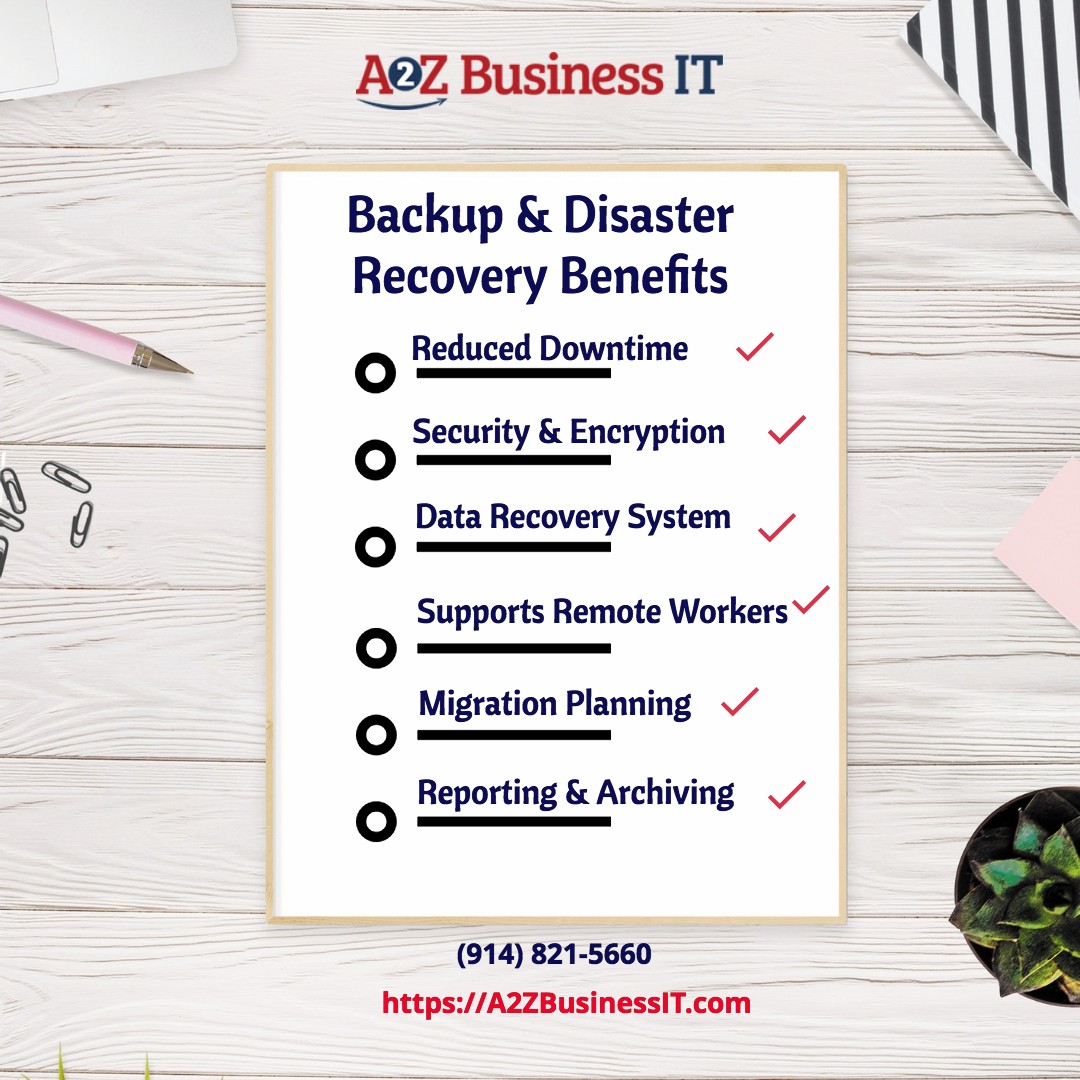
Data is such a mission critical component of most businesses today that the era we are in is referred to as the "Information Age." Computer connectivity, processing speed, telecommunications and distributed access must be continuously reliable in the face of ransomware, hardware failures, software glitches, data corruption, communication disruption, employee error, natural disasters or physical catastrophes. To avoid down-time and increase efficiency, it makes sense to invest in backup and disaster recovery services (BDR).
According to one study, the cost of network downtime averages $5,600 per minute. Since Gartner Group caters to larger companies, this number might be overstated relative to your typical SMB (small to medium business). Other studies peg the cost of downtime at $8,000 an hour for the average SMB. With that said, imagine the reduced productivity of, say, all your customer service reps without access to customer accounts. How about the frustration that the prospect or the customer might feel in that instance? Would such an occurrence reflect poorly on your company? The difference between being up and running in 15 minutes in the event of a disaster as opposed to 24 hours or more starts to add - in ways measurable and immeasurable!
So here are some benefits to having a fully managed, cloud-based disaster recovery plan solution:
- No maintenance or monitoring expertise is required
- No Data loss
- Cost effective data recovery
- Full replicas of servers, desktop, mobile and app environment
- Restoration of server or desktops quickly
- Reporting & planning for both maintenance and proactive migration
- Security and encryption
- Archiving and accessibility
Supporting Work from Home Needs
Back in March and April of 2020, New York City was on lock down as a result of being the epicenter of the coronavirus pandemic in the United States; one of our Manhattan-based clients elected not to renew his NYC lease and decided to have his team work remotely. We help set the team up initially. Then, one of the firm’s partners began traveling back and forth between his New York City apartment and Vermont house. His Macbook Pro lost Internet connection and began prompting him with the message “error loading the installer resources.” With his permission, we were able to access the camera of his phone to see his desktop and guide him through the repair by phone. By obviating a trip to the nearest Apple store, which was a two-hour drive away, we kept his day productive.
Business Continuity
Put it all together and our service allows you to focus on providing employees with the appropriate tools to serve customers, attract prospects and maintain your business operations.
A2Z Business IT has served over one hundred small businesses, medium-sized companies and healthcare practices located in Westchester County; we are part of the 20 that currently has over a thousand clients on its roster. Our cloud based services have helped local businesses derive an excellent return on investment from their technology.
When you outsource your information technology with A2Z Business IT, we will perform the routine maintenance and periodic upgrades to secure your critical data and provide near-instant recovery should calamity strike. Our backup and disaster recovery solutions are cloud-based. As a result, your business is not dependent on media or crippled by location-based events, such as fires, storms, or other disasters. With remote data backup and suitable bandwidth allocation, recovery time is guaranteed within fifteen minutes provided your location has standard electrical service. If you have any questions, call us at (914) 821-5660.
FAQs
How does cloud disaster recovery differ from BDR?
Cloud recovery is a component of disaster recovery plan that maintains data in a cloud storage environment. Disaster recovery is the more comprehensive planning and fallbacks safeguarding against major events such as a cyber hack, natural disaster, equipment failure or inadvertent human error.
What is involved in Business continuity?
Business continuity is the planning involved in hardware, software, and telecommunication fail overs to ensure that critical business data is accessible or in the event of some major failure, it is quickly recoverable.
How has the move towards work from home impacted outsourced IT services?
Social ties and business cultural transmission notwithstanding, the needs of working from home present different challenges in terms of equipment, telecommunication, data security, information permission access, and productivity. While the need for physical office space will diminish, a distributed workforce will need hardware and software that operates at a certain level and can be restored remotely. Outsourced IT services better supports a varied environment, seamlessly adjusting to new demands unforeseen even a few months ago.
What is RTO and RPO in disaster recovery?
Recovery Time Objective (RTO) articulates the amount of time needed to bring a system back online. Recovery Point Objective (RPO) is a business range for acceptable data loss from downtime.






